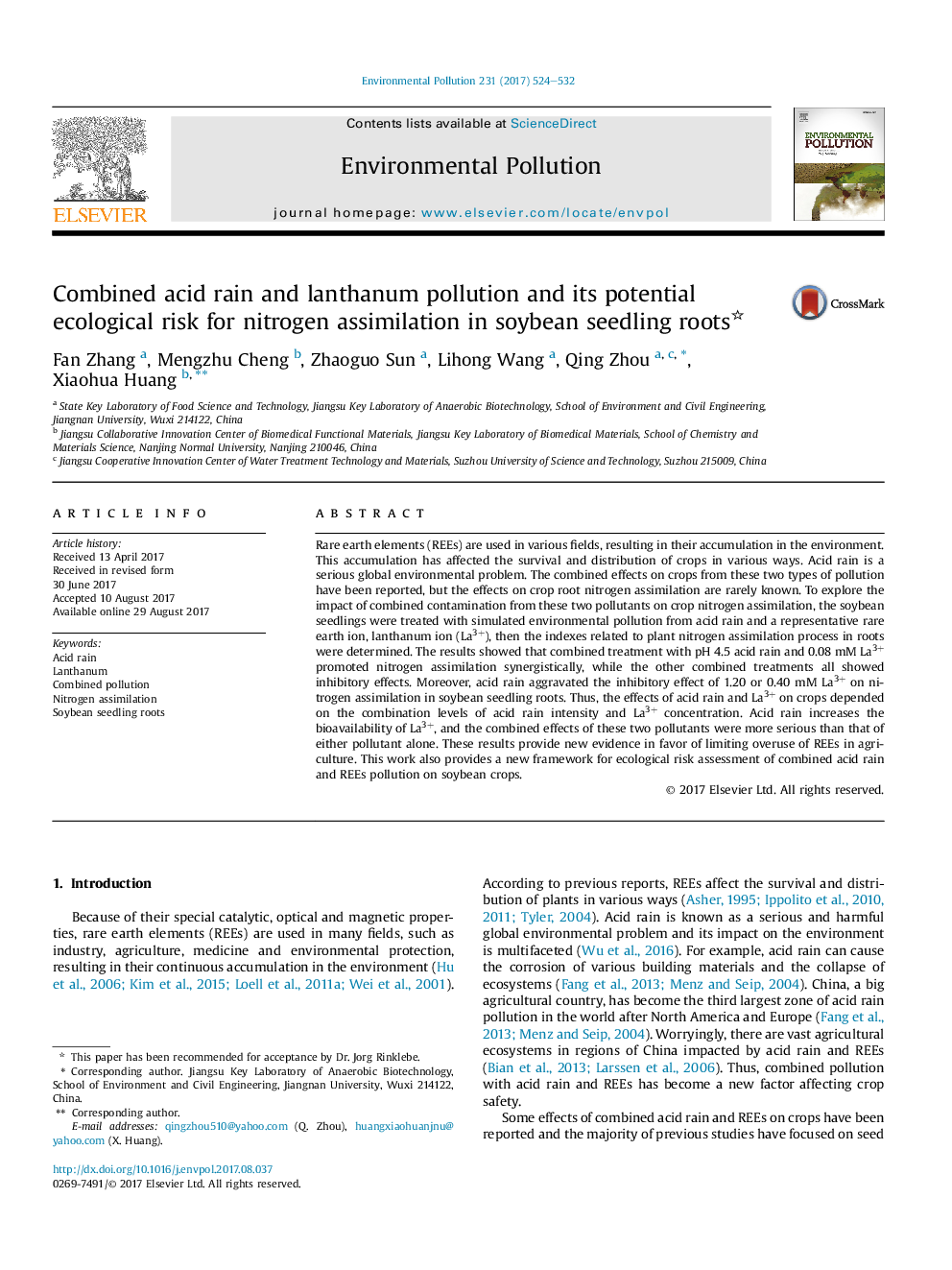| کد مقاله | کد نشریه | سال انتشار | مقاله انگلیسی | نسخه تمام متن |
|---|---|---|---|---|
| 5748590 | 1619142 | 2017 | 9 صفحه PDF | دانلود رایگان |
- Low-level combined acid rain and La3+ treatment improved the nitrogen assimilation.
- High-level combined acid rain and La3+ pollution inhibited the nitrogen assimilation.
- Acid rain aggravated La3+ pollution on nitrogen assimilation in soybean roots.
- Change in nitrogen assimilation in roots depended on the key enzymes and substrates.
Rare earth elements (REEs) are used in various fields, resulting in their accumulation in the environment. This accumulation has affected the survival and distribution of crops in various ways. Acid rain is a serious global environmental problem. The combined effects on crops from these two types of pollution have been reported, but the effects on crop root nitrogen assimilation are rarely known. To explore the impact of combined contamination from these two pollutants on crop nitrogen assimilation, the soybean seedlings were treated with simulated environmental pollution from acid rain and a representative rare earth ion, lanthanum ion (La3+), then the indexes related to plant nitrogen assimilation process in roots were determined. The results showed that combined treatment with pH 4.5 acid rain and 0.08Â mM La3+ promoted nitrogen assimilation synergistically, while the other combined treatments all showed inhibitory effects. Moreover, acid rain aggravated the inhibitory effect of 1.20 or 0.40Â mM La3+ on nitrogen assimilation in soybean seedling roots. Thus, the effects of acid rain and La3+ on crops depended on the combination levels of acid rain intensity and La3+ concentration. Acid rain increases the bioavailability of La3+, and the combined effects of these two pollutants were more serious than that of either pollutant alone. These results provide new evidence in favor of limiting overuse of REEs in agriculture. This work also provides a new framework for ecological risk assessment of combined acid rain and REEs pollution on soybean crops.
190
Journal: Environmental Pollution - Volume 231, Part 1, December 2017, Pages 524-532
